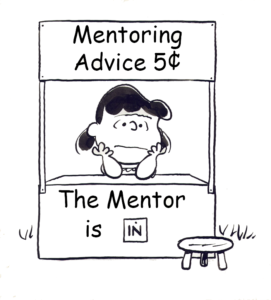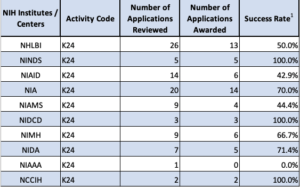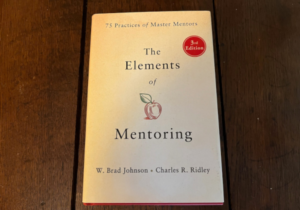Article
How to Get a K24
Four recipients of K24 Midcareer Investigator Award in Patient-Oriented Research awards shared their best advice for writing these grants that protect time for independent investigators at the Assistant or Associate Professor level to mentor. (More on why you should write a K24.)
Panelists at this Vanderbilt event:
| Tina Hartert, MD, MPH Lulu H. Owen Professor of Medicine |
Lorraine Ware, MD Professor of Medicine, Pathology, Microbiology & Immunology |
| Warren Taylor, MD, MSc James G. Blakemore Professor of Psychiatry |
Lisa Young, MD Associate Professor of Pediatrics, Medicine & Cell Biology |
What Is a K24, Why Do You Need One, and When Should You Apply?
- A K24 is a midcareer award that protects 25-50% of your time for mentoring and learning a new skill or expanding on an existing skill.
- Eligible applicants are at the Assistant or Associate Professor level, R01 (or equivalent)-funded, and doing patient-oriented research.
- Patient-oriented research involves direct contact with patients (not just the EMR or biospecimens).
- PhDs and MDs are eligible.
- Not all institutes offer one, and those that do have different rules about renewals, allowed effort, and other components.
- Success rates are very high—typically over 45%, sometimes up to 100%. Many are funded on the first try.
- Think about timing of a K24 submission in relationship to your own grant funding cycles and promotion timeline.
- When you’re ready for the responsibility of mentoring postdocs or K scholars (which equals responsibility for someone else’s career!), this will protect your time to do it.
Do and Consider Before Writing
- Search RePORTER for funded K24s in your institute—very helpful for getting a sense of the scope of projects proposed by others and how to uniquely position yourself.
- Solicit advice from others with K24s.
- Before you apply, honestly appraise your mentoring track record. Can you show mentoring success? What kind of impact have you had on people who trained with you even for a short time?
- Know your local department and your field—how many people are like you?
- Select the specific group of people you want to mentor; make sure it fills a need and fits with institution priorities. External mentorship counts—use professional organizations’ mentoring programs.
- Make sure you have research projects available at the right level for the people you propose to train, from medical or graduate students to fellows to K scholars. You will need to show how your mentees can create a niche for themselves and propel their career, rather than simply extending your research program.
- Strategically plan for what you will give up (or negotiate to give up) if your K24 is funded so that you have protected time for mentoring.
- Get involved with national projects that show leadership and mentoring, such as organizing a Gordon conference, leading a workshop at the big meeting in your field, or blogging on Edge for Scholars. Not only can you highlight it in your application, you can also request letters of support from others involved.
- Talk with your program officer.
- Read institute goals and align your application with them. Make sure you read the most current. Institutes frequently revise these programs based on institutional priorities.
- As with R01s, sometimes your grant might fit more than one institute, and you can tweak your application for the one with a better payline. Your K24 does not have to be through the same institute as your R01.
 Shape Your Mentoring and Learning Strategies
Shape Your Mentoring and Learning Strategies
- Decide whether you want to and can best make a case for learning a new skill or technique vs. developing a logical extension of your current skillset. Make an argument about how this will drive your career.
- Your proposed research must meet the definition of patient-oriented, but consider applying even if you have a track record in basic or translational research if you can make the case for how this will propel your career development and that of your mentees.
- One panelist’s reviewers considered it a minor weakness to not list a senior mentor.
- Choosing a primary mentor:
- Choose someone not on your K23/K08.
- Thematically look at investigators who can provide new ideas and new approaches to your research efforts.
- Look at mentors who are successful.
- Consider a mentoring committee rather than a single individual.
- Consider external expertise for members of a committee.
- Prior to writing, discuss with local training infrastructure leaders how to take advantage of both mentoring opportunities and supports available through your institution, as well as the resources your mentees can access.
- Specify how you will find mentees. Think outside your own discipline, and even outside your institution.
- Consider how mentees will be able to develop their own niche and eventually become independent.
Write the Application
 Think of this grant as one big personal statement and resume. Find your story.
Think of this grant as one big personal statement and resume. Find your story.- You might write this grant in a non-standard order. One panelist wrote most of the grant with a relatively underdeveloped Aims page, and then did a lot of Aims page work and realigned rather late in the grant writing process.
- Consider using the instructions or even copying the required section headers into the application, as this grant is in a non-traditional format compared with what many reviewers are accustomed to reviewing.
- Clarify what you will not do in order to focus on mentoring and research, and have your chair put this in writing in his or her letter.
- Your mentoring history is really important—be sure to showcase trainee awards, funding, publications and current (hopefully academic/research) positions. Keep up with your mentees.
- Have a clear vision of what is next. How will you use the skills you develop, and what is your next step as a mentor?
- Some propose to write a T32 or K12 while on the K24; having a K24 in hand assures reviewers of training grants that you will have time to actually mentor those trainees.
- The research plan needs to build upon your funded research program that is already in place. Describe your program, how the proposed research builds upon it, and specifically how it supports trainee projects and their careers.
- If you elect to propose new research within the research plan, be aware that funds are limited and that a new project opens you up to critiques of the research project along with critiques of everything else in the application.
- The budget allows salary support to protect your time for mentoring and use of remaining support for components of your research program that can help to support mentees.
- Consider allocating budget for statistical support and research coordinator/nurse to support trainees especially. A K24 also reduces the salary support you must take on your R01(s), which frees up funds for trainees.
Do you have other advice for writers of K24s? Tell us in the comments below.
More Mentoring Ideas
Why You Want to Mentor via NRMN Guided Virtual Mentorships
It Is Never Too Early to Be a Mentor
Speed Mentoring: Seven Steps to a Successful Session








0 Comments